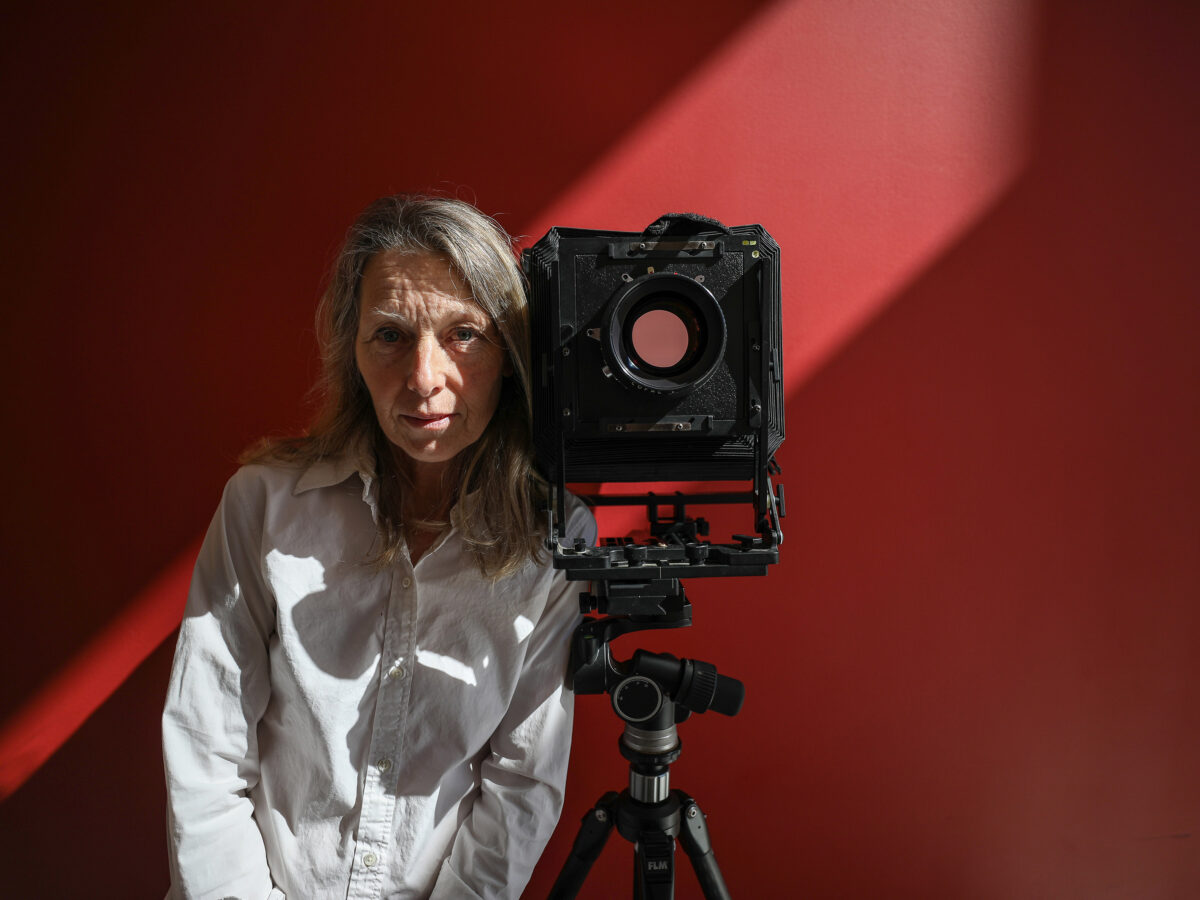Cheryle St. Onge

Art Instructor Cheryle St. Onge was working as an adjunct college professor five years ago when her mother, Carole, was diagnosed with vascular dementia. St. Onge quickly saw the impact of her mother’s illness, as Carole has long lived in an apartment adjacent to the house in Durham, New Hampshire, where St. Onge raised three children and now lives with her husband.
“I’d be gone all day, teaching a two- or three-hour class,” St. Onge says. “Then I’d drive home, and find the rose bed ripped up or something. … And this is when she was very functional.”
Initially, when St. Onge decided to stay home and help care for her mother, she figured she could teach online courses, keep working on her own photography, maybe do some archiving. But Carole’s mental state deteriorated more quickly than she expected. “It’s almost as if she slowed down,” St. Onge remembers. “I found myself in a situation where I was not really making any work and I wasn’t teaching anywhere.”
She filled the teaching void in 2017 when St. Onge began at Exeter. She quickly found a much-needed circle of support and encouragement among her Art Department colleagues, not to mention the “brilliant” students enrolled in her photography classes.
‘Calling the Birds Home’
Between teaching and caring for her mother, St. Onge was too worn out and emotionally depleted to do her own creative work. She also resisted the idea of photographing her mother, with whom she has always had a close relationship, in her current circumstances. “It just seemed so unconscionable to make a picture of someone that you honestly perceived was dying,” St. Onge says.
Then, in the spring of 2018, one of St. Onge’s friends challenged her to enter an upcoming art fair. When she told her mother they were going to go outside and make a picture, Carole was “completely willing,” St. Onge says. “It was really just the muscle memory of making a picture with someone that you love, and her experience of being dragged around my whole life making pictures.”
Carole is an artist and bird-watcher, and before dementia, she carved sculptures of birds out of wood. When St. Onge began sharing on Instagram the photos she took of her mother, she named the project “Calling the Birds Home.” Since April 2018, she has shared more than 100 images and videos, most of them portraits of Carole: painstakingly grooming their old horse, Ellie, in the barn; getting a haircut; doing one of her ever-present word puzzles; or simply sitting in a chair outside, her head tipped back to feel the sun on her face.
Though she’s long worked with an 8×10 view camera, St. Onge has used an iPhone for most of the pictures of Carole, which she found easier and more natural for this project. When she began teaching at Exeter, St. Onge found that her students mainly use their phones to take photos, which she encourages. “The camera that you have with you is the one that you need to use.”


The tremendous response to the project took St. Onge by surprise. Until she posted that first photo on Instagram, she hadn’t told many of her art friends, colleagues or the wider world about her mother’s dementia, or her own related struggles. Now, people she doesn’t know write her long emails about caring for their own aging parents, or express regret at not having captured images of their departed loved ones as St. Onge had.
Critical acclaim
St. Onge first exhibited images from “Calling the Birds Home” at PEA, in the Art 500 show this past spring. In May, The New Yorker featured St. Onge’s photographs in a photo feature around Mother’s Day. As a finalist for the Arnold Newman Prize, her images went on exhibit in October at the Griffin Museum in Winchester, Massachusetts. A photograph taken this past winter of Carole in a fake fur coat, making a snow angel, was considered for the Taylor Wessing Prize, and will be included in the accompanying exhibition at London’s National Portrait Gallery in November.
There have also been negative reactions to her work, including people who accuse her of taking advantage of her mother. “I try not to read too many comments,” St. Onge says. “I try to say, if you were there in the moment, I just don’t think that’s true. My mom and I had an extremely beautiful, tight, fabulous relationship, and this is probably the one example where that still exists.”
As light-filled and joyous as the portraits of Carole sometimes are, they also reflect the darker reality of her late-stage illness and its impact. St. Onge is an only child, and her father died in a car accident when she was a teenager. She remembers getting through the experience alongside her mother, with whom she was able to “have great conversations about death, and how we were coping with that loss.”

As a result, St. Onge always felt comfortable with death, even finding beauty in it through her work. She points out that many of the photographs in an earlier project, “Natural Findings” (which earned her a 2009 John Simon Guggenheim Fellowship), depicted dead things, including leaves, flowers, insects and birds.
When it comes to her mother, however, St. Onge knows she is facing a different level of loss. Carole herself isn’t scared of dying — she talks about it all the time, and doesn’t understand why it makes her daughter cry. “There is that beautiful suspension of reality because you know that she’s not experiencing the sadness,” St. Onge says of these times. “She’ll just give you a hug and say ‘I just love you so much.’ She’s totally in the moment.”
— Sarah Pruitt ’95


